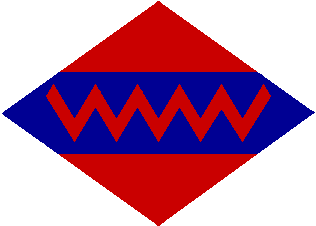
1st Army Group Royal Artillery was a brigade-sized formation organised by Britain's Royal Artillery during World War II to command medium and heavy guns. It served in the final stages of the Tunisian Campaign and throughout the Italian Campaign. It reformed in the Territorial Army in the 1950s to command air defence units.

The 7th Medium Regiment, Royal Canadian Artillery, was one of six Canadian medium regiments that saw service in Britain and continental Europe in the Second World War, the others being the 1st, 2nd, 3rd, 4th, and 5th Medium Regiments. (There was no 6th Medium.)

The 1st (Halifax-Dartmouth) Field Artillery Regiment, RCA, is a Canadian Army reserve artillery regiment. It is located in Halifax, Nova Scotia, at 73 Hobson Lake Drive. The unit consists of two batteries, 51st and 84th Field Batteries. There are two units located within 1st (Halifax-Dartmouth) Field Artillery Regiment. One is in Halifax and the other is the 84th Independent Field Battery located in Yarmouth NS. Both share the same Commanding Officer.

15th Field Artillery Regiment, RCA, is a Primary Reserve Royal Canadian Artillery (RCA) regiment based in Vancouver, British Columbia, at the Bessborough Armoury. 15th Field Regiment is part of the 39 Canadian Brigade Group of 3rd Canadian Division.

The West Riding Artillery was formed as a group of volunteer units of the British Army in 1860. Its units later formed the divisional artillery of the West Riding Division of the Territorial Force in World War I and World War II. The West Riding Artillery's lineage is continued in a battery of today's Army Reserve

The 5th Medium Regiment, Royal Canadian Artillery, was one of six Canadian medium regiments that saw service in Britain and continental Europe in the Second World War, the others being the 1st, 2nd, 3rd, 4th, and 7th Medium Regiments.

II Canadian Corps was a corps-level formation that, along with I (British) Corps and I Canadian Corps, comprised the First Canadian Army in Northwest Europe during World War II.

I Canadian Corps was one of the two corps fielded by the Canadian Army during the Second World War.

The 52nd Air Defense Artillery Regiment is an air defense artillery regiment of the United States Army first organized in 1917 as a railway gun unit. It continued in that role unit 1943, when the regiment was broken in separate railway gun battalions, and in the following year the units were reorganized and redesignated as field artillery.

The First Canadian Army was a field army and a formation of the Canadian Army in World War II in which most Canadian elements serving in North-West Europe were assigned. It served on the Western Front from July 1944 until May 1945.
The 56th Field Artillery Regiment, Royal Canadian Artillery is a Canadian Army Reserve artillery regiment based in Brantford, Ontario. The regiment is currently part of 4th Canadian Division's 32 Canadian Brigade Group.
The Tynemouth Volunteer Artillery claims to be the oldest volunteer artillery unit of the British Army. It served coastal and siege guns in World War I and World War II, and also served in the infantry role.
The North Midland (Staffordshire) Heavy Battery was a Territorial Force (TF) unit of the Royal Garrison Artillery (RGA) formed in Staffordshire in 1908. It fought on the Western Front during World War I. Converted to medium artillery in the 1920s, the unit took part in the Battle of France and Dunkirk Evacuation in the early part of World War II, before returning to action in North Africa and Italy, and finally in North West Europe.
The London Heavy Brigade, Royal Garrison Artillery was a unit of the British Territorial Force formed in 1908. It fought on the Western Front during World War I, and its successors served in the Mediterranean and North-West Europe theatres during World War II.
The 1st Kent Artillery Volunteers was a part-time unit of the British Army's Royal Artillery from 1860 to 1956. Primarily serving as coastal artillery defending the Port of Dover and other harbours in South-East England, the unit's successors also served in the heavy artillery role on the Western Front during World War I and as anti-aircraft artillery during the Blitz and later in the North African and Italian campaigns of World War II.

The East Riding Royal Garrison Artillery (ERRGA) was a part-time unit of Britain's Royal Artillery based at Hull in the East Riding of Yorkshire. It provided coastal defence artillery along the Humber Estuary from 1908 to 1956, manned siege batteries on the Western Front during World War I at the Somme and Ypres and played a role in the pursuit of the German army during the Hundred Days Offensive. It served as infantry in Allied-occupied Germany after World War II. Its successor units in the Territorial Army included anti-aircraft artillery and field engineers.
The 50th Coast Artillery Regiment was a Coast Artillery Corps regiment in the Regular Army. It was mobilized in World War I and World War II.

The Edinburgh City Artillery was a part-time unit of Britain's Volunteer Force raised around Edinburgh in 1859. It was the parent unit for a number of batteries in the later Territorial Force, including heavy batteries of the Royal Garrison Artillery that fought on the Western Front during World War I. It later formed a heavy regiment that served in the Battle of France and the campaign in North West Europe during World War II, while a spin-off medium regiment fought in Sicily and Italy. Its successor units continued in the postwar Territorial Army until the 1960s.

2nd Army Group Royal Artillery was a brigade-sized formation organised by Britain's Royal Artillery (RA) during World War II to command medium and heavy guns. It served in the final stages of the Tunisian Campaign and throughout the Italian Campaign. It reformed in the Territorial Army in the 1950s to command air defence units.
The King's Canadian Hussars were a cavalry regiment of the Non-Permanent Active Militia of the Canadian Militia. In August 1939, the regiment was converted to artillery and currently exists today as the 87th Field Battery, RCA.










